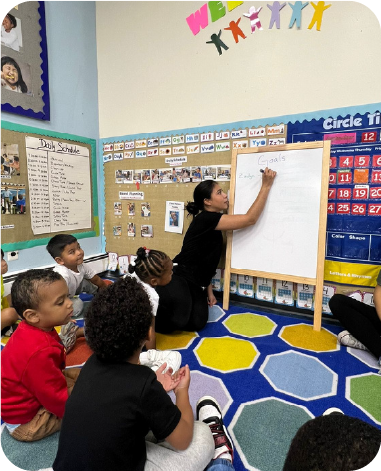Understanding how infants learn is crucial for parents, caregivers, and educators. Infants experience significant cognitive and physical development during their early years, and recognizing the most effective methods for fostering learning can aid in their overall growth. This article explores various aspects of infant learning, from sensory experiences to the importance of a supportive environment.
Understanding Infant Learning Processes
Infants engage with the world in unique ways, primarily through their senses. They learn by observing, touching, hearing, and smelling, all of which contribute to their cognitive development. Understanding the intricacies of these learning processes helps caregivers create ideal situations for infants to thrive.

One key concept in infant learning is the idea of scaffolding, which involves providing support as infants gain new skills. Caregivers play a vital role in this process by introducing challenges that are appropriate for the infant’s development stage, allowing them to build on previous knowledge and experiences. This supportive framework not only fosters independence but also nurtures a sense of security, encouraging infants to explore their surroundings with confidence.
The Role of Sensory Experiences in Infant Learning
Infants are driven by sensory experiences, which provide them with crucial information about their environment. From the moment they are born, they begin to use their senses to explore the world around them. Touching soft objects, listening to different sounds, and tasting new flavors all contribute to their understanding. Sensory play is not just a fun activity; it is a fundamental aspect of brain development, as it stimulates neural connections that are essential for later learning.
Parents and caregivers can enhance sensory experiences by providing a variety of textures, sounds, and visual stimuli. Simple activities, like playing with colorful toys or exposing infants to diverse music styles, can significantly enrich their sensory development. Additionally, incorporating natural elements, such as leaves, water, and sand, can create a multi-sensory experience that promotes curiosity and exploration. These interactions not only captivate infants’ attention but also lay the groundwork for critical thinking and problem-solving skills as they grow.
Cognitive Development Stages in Infants
Cognitive development in infants occurs in stages, each characterized by different methods of learning. By understanding these stages, caregivers can better facilitate learning opportunities that align with infants’ developmental capabilities. Examples of these stages include sensorimotor development, where infants learn through direct interaction with their environment. During this period, they begin to understand object permanence, recognizing that objects continue to exist even when they are out of sight, which is a significant cognitive milestone.
Each stage builds on the previous one, leading to more complex skills and understanding. Recognizing these stages allows caregivers to tailor their interactions, ensuring they provide appropriate challenges that encourage growth without overwhelming the infant. For instance, during the preoperational stage, caregivers can introduce simple problem-solving tasks that promote symbolic thinking, such as using blocks to represent different objects. Engaging in such activities not only supports cognitive development but also strengthens the bond between caregiver and infant, fostering a nurturing environment conducive to learning.
The Importance of Interactive Learning
Interactive learning is essential for infants as it promotes engagement and helps form strong cognitive connections. When caregivers actively participate in learning experiences, infants are more likely to learn effectively and retain information.
Interactive learning can take many forms, from reading books together to playing games that encourage problem-solving. These experiences help bridge important cognitive and emotional connections that lay the foundation for future learning. The active involvement of caregivers not only enhances the learning process but also strengthens the emotional bond between the caregiver and the infant, fostering a sense of security and trust that is vital for healthy development.
Furthermore, interactive learning environments can be enriched by incorporating technology in moderation. For instance, educational apps designed for infants can provide stimulating content that complements traditional learning methods. When used thoughtfully, these tools can enhance engagement and introduce new concepts in a playful manner, ensuring that learning remains dynamic and exciting.
The Impact of Play on Infant Learning
Play is a primary avenue for learning in infancy. Through play, infants explore their surroundings, experiment with their bodies, and develop social skills. Unstructured play with various materials—such as toys, blocks, and art supplies—encourages creativity and critical thinking.
Moreover, play with peers or caregivers fosters essential social skills, including sharing, turn-taking, and emotional regulation. Incorporating play into daily routines ensures that learning is fun and allows infants to engage naturally with the world around them. For example, simple activities like building a tower with blocks can teach infants about balance and gravity while also promoting fine motor skills. As they knock down the tower and rebuild it, they learn about cause and effect, all while having fun.
Additionally, sensory play—such as playing with water, sand, or textured materials—can stimulate an infant’s senses and enhance cognitive development. These activities not only captivate their attention but also encourage exploration and experimentation, which are key components of effective learning during this crucial stage of development.
Social Interaction and Infant Learning
Social interaction is crucial for infant learning as it provides opportunities for infants to observe and imitate others. From a young age, infants can recognize and respond to familiar faces. This recognition encourages bonding and communication, essential elements in learning.
Through social interactions, infants also develop language skills. Engaging in conversations, even if the infant does not yet respond verbally, lays the groundwork for future communication. Activities such as singing, talking, and reading together are effective ways to enhance these interactions. The rhythm and melody of songs can captivate infants, making them more likely to engage and respond, which in turn reinforces their understanding of language patterns and sounds.
Moreover, the role of non-verbal communication cannot be overlooked. Infants are keen observers of body language, facial expressions, and tone of voice. These cues provide context to verbal communication and help infants learn the nuances of social interactions. When caregivers smile, make eye contact, or use animated gestures, they create a rich tapestry of communication that infants can learn from, fostering a deeper understanding of social dynamics and emotional intelligence from an early age.
Language Acquisition in Infants
Language acquisition is a pivotal part of an infant’s development. It begins even before the infant can articulate words, with listening and observing serving as foundational skills. The process of learning language encompasses the understanding of sounds, words, and eventually, sentences.

Effective language development strategies often involve repeated exposure to language through conversation, storytelling, and music. This exposure helps infants connect sounds with meanings, preparing them for more complex linguistic skills as they grow.
The Process of Language Learning in Infants
Language learning for infants typically unfolds in stages, starting with cooing and babbling, advancing to single words, and eventually progressing to two-word phrases and beyond. It is important for caregivers to encourage this development by providing rich language input and responding to their attempts at communication.
Creating a language-rich environment bolsters vocabulary development. Reading aloud to infants, engaging in conversation, and singing songs expose them to varied vocabulary and linguistic structures, fostering ongoing language skills.
The Influence of Parent-Infant Communication
The quality of communication between parents and infants significantly impacts language acquisition. Responsive communication—where parents react to and build on an infant’s attempts at interaction—strengthens the communicative bond and enhances language skills.
By making eye contact, using varied intonation, and employing gestures, parents can further stimulate interest and understanding. This responsive approach not only builds language skills but also enhances the emotional connection between parent and child.
Role of Repetition in Infant Learning
Repetition plays a vital role in reinforcing learning during infancy. By exposing infants to the same information or experiences repeatedly, caregivers can help them internalize knowledge and skills. Repetition helps with memory retention and enhances recognition.
Infants learn through patterns and predictability, and engaging in repetitive activities like singing the same songs or reading the same books allows them to anticipate what comes next, which is reassuring and supports their learning process.
How Repetition Enhances Memory and Recognition
When infants are introduced to new concepts or skills through repetition, they begin to recognize patterns and make connections. This recognition is foundational for cognitive development. Each repeated exposure strengthens neural pathways, making it easier for infants to recall information in the future.
Furthermore, repetition fosters confidence in infants as they become more familiar with activities. For instance, playing the same game or reading familiar stories allows infants to feel competent and capable, encouraging them to explore further.
Repetition and Skill Development in Infants
The process of developing new skills is deeply rooted in repetition. Whether learning to grasp objects, crawl, or eventually walk, infants benefit from repeated practice. Caregivers can facilitate this development by providing safe opportunities for practice paired with encouragement.
Engaging in repetitive physical activities—like reaching for toys or stacking blocks—further solidifies motor skills. This cycle of practice and reinforcement is crucial for infants’ overall skill development.
The Effect of Environment on Infant Learning
The environment in which an infant learns plays a significant role in their educational outcomes. A nurturing and stimulating environment can greatly enhance learning experiences and support cognitive and emotional development.

Caregivers are encouraged to create a safe, secure, and rich environment filled with opportunities for exploration and discovery. This sense of safety allows infants to engage and learn without fear, which is essential for their overall growth.
The Role of a Stimulating Environment
A stimulating environment encompasses a variety of experiences and stimuli—visually, audibly, and tactilely. Offering diverse toys, exposure to different sounds, and opportunities for social interaction can significantly enrich an infant’s learning experience.
Moreover, environments with varied physical layouts encourage movement and exploration. Items placed at different heights, open spaces for crawling, or safe areas for standing all invite infants to practice their developing skills.
The Impact of a Safe and Secure Environment on Learning
A safe, secure environment allows infants to explore confidently. When infants feel secure, they are more likely to engage in curious behaviors, which are essential for learning. A predictable routine coupled with secure attachments to caregivers fosters an environment where the infant can focus on learning and development.
Creating such an environment involves ensuring that infants have reliable support systems—through consistent routines and loving interactions. This emotional security serves as a foundation for cognitive exploration and growth.
In summary, understanding the various facets of how infants learn can significantly enhance caregiving practices and promote healthy development. By nurturing sensory experiences, encouraging interactive learning, and providing a safe environment, caregivers can facilitate effective learning experiences tailored to each infant’s unique needs.









